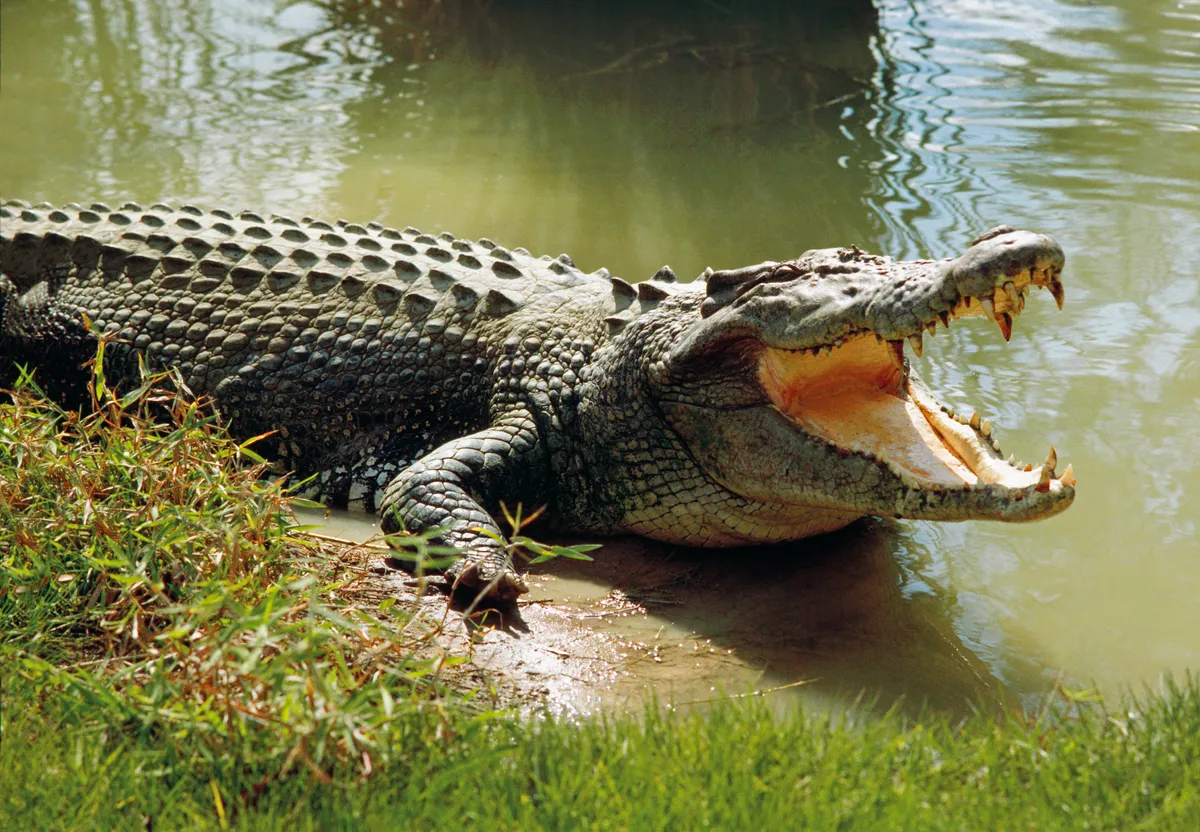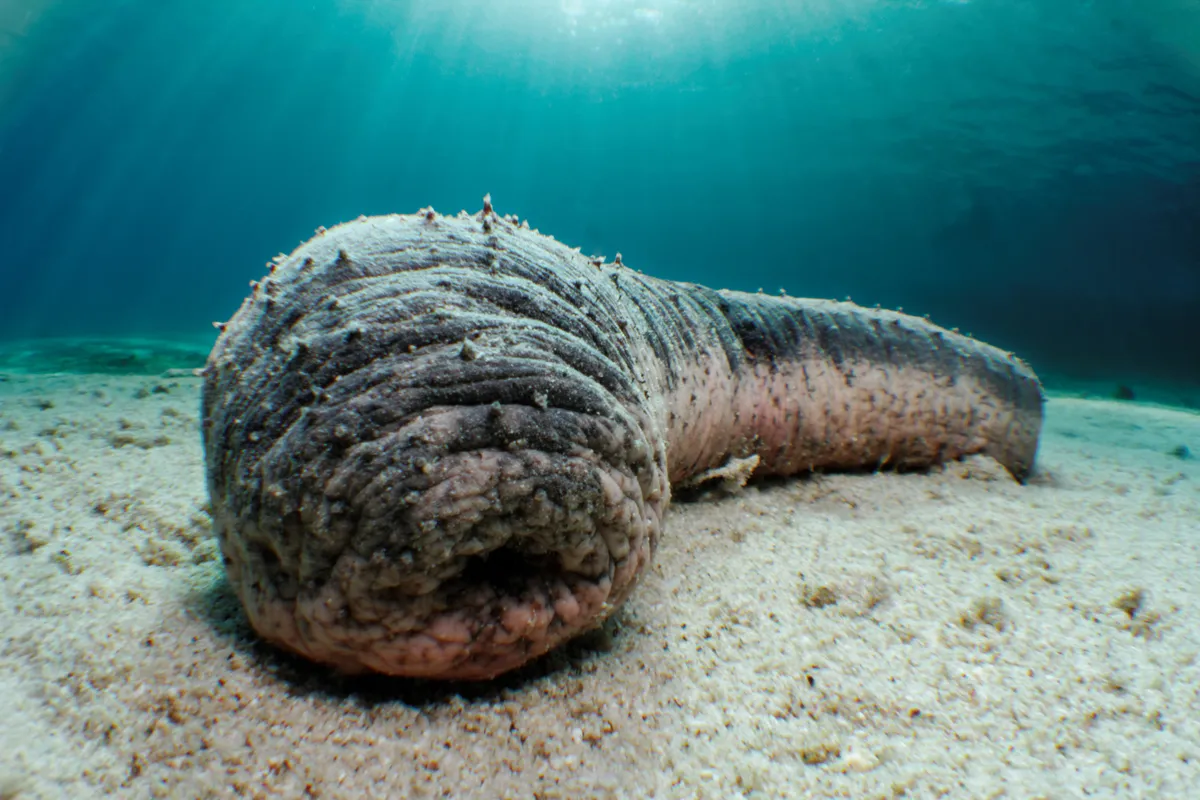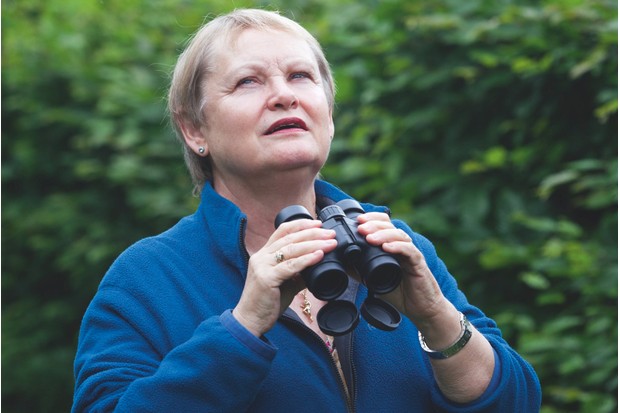Nature has wonderful ways of equipping an animal’s body with what it needs to survive, says Sheena Harvey. But some adaptations are just plain bizarre, like being able to push your stomach out through your mouth…
Nature's weirdest internal organs
Sea star stomachs

What do you do if your meal is sandwiched between two hard shells and you don’t have any way of separating them completely to get at the animal inside and eat it? A sea star has a neat but stomach-churning solution.
It climbs on top of a prey animal such as a mussel using its tubular feet. It then searches for any tiny opening in the tightly clamped shells and uses water pressure through the feet to enlarge the gap. The next move is to push what is called its cardiac stomach out of its mouth, which is handily positioned in the middle of its underside, directly over the prey. This actionto turn its stomach out is known as eversion.
Once outside the body the everted stomach can squeeze between the protective shields of the mussel and begin to secrete powerful digestive juices. The enzymes in these juices break down the soft tissue of the mussel and turn it into liquid. This nutritious soup is absorbed by the cardiac stomach and transferred to a second stomach called the pyloric to complete the digestion process.
The sea star then pulls the cardiac stomach back into its body, leaving the empty mussel shells behind, and goes in search of the next crustacean meal.
Crocodile hearts

Crocodiles can remain underwater for long periods of time, despite the need to breathe. What helps is their unusual heart. Unlike other animals that only have one aorta to carry blood out of the right ventricle – one of the four chambers in the heart – and circulate it round the body, the croc has two. One exits the right ventricle and the other the left.
- Crocodile vs alligator: what's the difference between these two fearsome predators?
- Weirdest hearts in the world: discover an animal with 5 hearts, a heart that can regrow - and other fascinating and weird cardiac facts from the animal kingdom
Crocodiles also have a unique valve at the top of the right ventricle that they can consciously control. This shuts off the blood that would ordinarily be moving from their heart to theirlungs to pick up oxygen.
Instead, the blood leaves via the left ventricle through the extra aorta and makes another circuit of the body. The beauty of this arrangement is that it enables the crocodile to release from its heart just a small amount of blood to be oxygenated. Other animals cannot help but circulate all their blood supply through their lungs.
By this means, the oxygen in the stored air within the crocodile’s lungs is eked out much further. Controlling the rate at which they dip into their supply of oxygen, enables the reptiles to stay underwater much longer.
When the croc makes its dive, it breathes deeply and slows its heart to pump at less than 10 beats a minute. It closes the valve in the right ventricle and concentrates the blood leaving the heart in support of its vital organs. By using less energy and only sending blood to the lungs when it becomes really necessary it can stay submerged for hours – hidden and waiting to ambush its prey.
Sea cucumber anuses

They look like giant slugs crawling slowly over the seabed – some of them knobbly, some smooth, but all somewhat unappealing to human eyes. However, their primary defence mechanism is even less appealing.
- This weird sea cucumber fires poisonous intestines from its butt to deter predators. Don't worry, they grow back...
- Weirdest butts: These are the strangest – and sometimes deadliest – arses in the animal kingdom
- Bottoms are just for pooping and peeing right? Not always... This animal can also breathe and eat through its anus - meet the world's most amazing arse
When threatened, a sea cucumber violently contracts the muscles of its rear end and expels some of its internal organs. This is designed to distract a would-be predator with the bewildering suddenness of the self-evisceration, but in case this approach doesn’t have the desired effect, the animal also throws out a bundle of white threads called Cuvierian tubules that form part of its respiratory system.
When the tubules hit sea water they expand in length and become very adhesive. These sticky noodles engulf the predator and stop it in its tracks. Both tactics enable the sea cucumber to flood itself with water and float away to safety. The lost internal organs regenerate in a few days.
Of course, sea cucumbers use their anuses for the usual bodily function of processing waste, too. This is important for the health of the ocean environment because the animals ingest smothering algae and marine waste products from the ocean floor and poo out clean sand.
Interestingly, these are not the only actions associated with a sea cucumber’s anus. They also breathe through it. They relax the anal sphincter and suck in water that passes over a branching lung-like structure called a respiratory tree, at the base of which the Cuvierian tubules lie, where oxygen is extracted.
Opening the anus, though, has the unfortunate effect of allowing tiny sea pearlfish to wriggle their way in and make the interior of the animal their home. These bizarre squatters are tolerated by the cucumber, although it clearly has no option since to clench its bum is tantamount to holding its breath.
Distressingly, though, if the invaders of personal cucumber space are from one of seven particular species of sea pearlfish called encheliophis, they reward their hosts by eating their gonads!
Camel noses

To live in the arid conditions of a desert a camel has to arm itself to cope with a lack of water for prolonged periods as well as the likelihood of choking sandstorms. That is where a special nose is a life saver.
A camel has narrow nostrils that it can close tight. A minimum but sufficient amount of air can pass through them, but dust is prevented from entering. Inside the nose are structures known as turbinates – spongy nasal bones covered in a mucus membrane. These exist in all animals’ noses to filter the air as they inhale, warming and humidifying the incoming breathin normal atmospheric conditions. But a camel’s turbinates are extensive and specially adapted to minimise water loss from the animal’s outgoing breath into the parched desert atmosphere.
In a dehydrated camel the mucous membranes are dry and hygroscopic, a term meaning that they readily absorb and retain moisture. When the camel breathes out, these special membranes hold on to the water vapour that would otherwise leave its body. As it breathes in, the moisture is released from the membranes again, to be carried back into the lungs.
In this way, the camel retains as much of its internal hydration as possible, which enables it to go for long periods between drinks. Mind you, when they drink, they really drink. The average camel will suck up 200 litres of water in under three minutes.
Reindeer eyes

If you encounter a reindeer in winter, you’ll be enchanted by its icy blue eyes. Meet the same reindeer in summer and its eyes will be a mellow golden brown. The inside of the eyes, like those of any animal that lives in low-light conditions, or is a predator that hunts at night, have a layer of tissue beneath the retina called the tapetum lucidum. It’s what can be seen shining luminously when a car’s headlights pick out the eyes of a cat.
- The secrets behind a reindeer's incredible vision - and why they possibly have no trouble finding their way on the snowiest of Christmas Eves
- The 8 weirdest eyes in the animal kingdom: From creepy to cute, here are the eyes that take ordinary to extraordinary
The cells of this tapetum layer contain various types of crystals that reflect the light that comes into the eye back again through the retina. This gives the photoreceptors in the retina the best chance of gathering the available light and so helps provide good night vision.
The reindeer’s blue tapetum comes about because in the northern winter months of almost permanent darkness, the animal’s pupils are almost constantly dilated to take in as much light as possible. This raises the pressure inside the eye and forces the tapetum fibres to pack tightly together which makes them reflect more blue wavelengths. To the observer, the eyes correspondingly appear blue in colour.
- Reindeer vs deer: what's the difference between a reindeer and a deer?
- What and how do animals see? Mysteries of animal vision explained
As an additional benefit, a blue tapetum allows a large amount of ultraviolet light into the eye, whereas a yellow one eliminates most of it. Cladonia rangiferina, also known as reindeer moss, is a favourite food of the ungulates and it so happens that it absorbs masses of UV rays. To a reindeer’s eyes, anything that contains a lot of UV shows up dark. Therefore, their normally pale-looking food source stands out very well against a snowy background.
In summer, the deer’s pupils contract in the sunshine, the tapetum relaxes and so their eyes reflect golden brown.
Sloth digestive tracts

Whether they’re two-fingered or three-fingered a sloth’s diet consists of fresh young leaves from a variety of trees in their native habitat. They graze slowly through the forest canopy, only ingesting about 75 grams a day – not a lot for a medium-sized herbivore.
They choose their food from around a dozen species they learnt about from their mothers. Switching from one to the other ensures they don’t build up a dangerous dose of the toxins any of them may contain.
- It's slow, covered in algae, likes hanging out upside down and is always smiling - meet the rainforest cutie that is a surprisingly good swimmer
- Prehistoric giant ground sloths once roamed the Americas – including one colossus that weighed 4 tonnes and stood 3.5 meters tall - yet couldn't run
- Why the sloth is Instagram's favourite animal
The leaves are tough and to process them sloths have a huge stomach that is constantly full of vegetable matter. So much so, it accounts for about two-thirds of their body weight. To support this enormous tummy, the two-fingered sloth has 23 pairs of ribs. The three-fingered only has 14 pairs but it has two extra vertebrae in its neck, perhaps to help counterbalance.
Inside the stomach is like a giant fermentation tank divided into four. The sloth’s gut bacteriabreak down the tough leaves at the rate of 30 days per leaf as they pass through the whole digestive process. The body draws its nutrition from this leaf mash.
The sloth’s oesophagus doesn’t stretch in a straight line from its mouth to its stomach, it loops round so the animal can hang upside down without losing its lunch. Unfortunately, this also means that sloths can’t burp, be sick or fart so excess gas has to be absorbed into their tissues. This does make them good swimmers, though, as they have inbuilt flotation.
The downside of the very slow leaf digestion is that the gut bacteria only function when the temperatures are warm. In the cold they stop working and can even die off, leading to the phenomenon of a sloth suffering from malnutrition while having a completely full stomach.
Octopus brains

Why have just one brain when you can have nine? Especially if you have to coordinate eight long, soft, mobile arms that can bend and twist in any direction. An octopus’ main central brain is a doughnut shape that lies between its eyes in the middle of the head. From it radiate nerves called axial nerve cords that run the length of each of the eight arms.
- What animal has the biggest brain?
- Surely animals need a brain to be clever? Not always... Discover some remarkably clever, yet brainless animals
The suckers along each arm are highly sensitive and not only feel the shape and temperature of everything the animal touches but smell and taste it as well. You can imagine there must be a multitude of messages constantly being sent along nerves from the many suckers – enough to give any creature a headache trying to process all that information.
- From venomous sex to maternal sacrifice: 7 fascinating facts about octopuses
- Why octopuses have three hearts: when three are better than one
To help, the octopus has eight ‘mini brains’ located in the arms. They don’t look like our idea of a brain – lobed and with walnut-like folds – but like a cluster of nerve cells called a ganglion that bulge out of a nerve fibre. Primitive they may appear, but the mini-brains contain two-thirds of the octopus’ neurons – cells that send and receive electrical messages from the body to the brain. The remaining third are in the creature’s main brain. The total number of neurons in the average octopus is the same as in the family dog. That means they have a lot of collective brain power, which is why they are known to be such intelligent problem solvers.
- This ocean goliath has 9 brains, hunts sharks at night and can grow as long as a school bus
- The 10 smartest animals in the world: Discover the cleverest creatures in the animal kingdom - and there may be some surprises
The mini-brains not only send messages to command centre, they also communicate with each other in pairs. One brain will connect to another two arms away, rather than the arm next door, and therefore the limbs coordinate as four pairs across the whole of the animal’s body. Each arm can work independently while ‘talking’ to its opposite number and not having to wait for instructions from the centre, which makes for greater speed and efficiency.
However, the main brain can exert top-down control over the mini-brains if necessary. It informs them about the overall environment and situation as seen through the eyes, so the arms can react appropriately to a potential source of food or any perceived danger.
